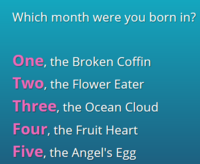Difference between revisions of "Hypertext"
From Introduction to Electronic Literature
| Line 1: | Line 1: | ||
| − | Hypertext is a great tool for writers to capitalize on. This literary format can encapsulate how readers and writers navigate, not only the digital world, but our contemporary state of living. In our current twenty first century lifestyle, we get bombarded with a vast amount of information or distractions that create interruptions to our nervous system and cognitive system. Because of this, hypertext within the “electronic novel” will be an essential feature of the interaction within the readership of the e-novel. There are four types of hyper text and how they were designed are: (1) those which feature only text presented as a series of nodes which are directly interlinked (sometimes with some sort of "map" that can be used as guidance); (2) those that feature significant graphical and kinetic components (i.e., hypermedia), also based on the 1:1 link—node premise; (3) those that present a virtual object that the user negotiates (without having to constantly "click" on links to traverse that text); and (4) those that are formed through methods of aleatoric progression. [[http://digitalhumanities.org:3030/companion/view?docId=blackwell/9781405148641/9781405148641.xml&chunk.id=ss1-5-11&toc.depth=1&toc.id=ss1-5-11&brand=9781405148641_brand]] This primarily deals with “digital poems” but I strongly feel that it’s applicable to an electronic novel, especially one that breaks away from linear narrative to further experiment or try to encapsulate the enormous amounts of hyper-distractions being thrown at us in our current digital age. | + | Hypertext is a great tool for writers to capitalize on. This literary format can encapsulate how readers and writers navigate, not only the digital world, but our contemporary state of living. In our current twenty first century lifestyle, we get bombarded with a vast amount of information or distractions that create interruptions to our nervous system and cognitive system. Because of this, hypertext within the “electronic novel” will be an essential feature of the interaction within the readership of the e-novel. [[File:With Those We Love Alive.png|200px|thumb|right|an example of hypertext in Twine Game ''With Those We Love Alive'']]There are four types of hyper text and how they were designed are: (1) those which feature only text presented as a series of nodes which are directly interlinked (sometimes with some sort of "map" that can be used as guidance); (2) those that feature significant graphical and kinetic components (i.e., hypermedia), also based on the 1:1 link—node premise; (3) those that present a virtual object that the user negotiates (without having to constantly "click" on links to traverse that text); and (4) those that are formed through methods of aleatoric progression. [[http://digitalhumanities.org:3030/companion/view?docId=blackwell/9781405148641/9781405148641.xml&chunk.id=ss1-5-11&toc.depth=1&toc.id=ss1-5-11&brand=9781405148641_brand]] This primarily deals with “digital poems” but I strongly feel that it’s applicable to an electronic novel, especially one that breaks away from linear narrative to further experiment or try to encapsulate the enormous amounts of hyper-distractions being thrown at us in our current digital age. |
| − | + | ||
==See also== | ==See also== | ||
*[[I Think My Dog Is Trying To Kill Me]] | *[[I Think My Dog Is Trying To Kill Me]] | ||
*[[I'm not hyper I'm just stubborn]] | *[[I'm not hyper I'm just stubborn]] | ||
